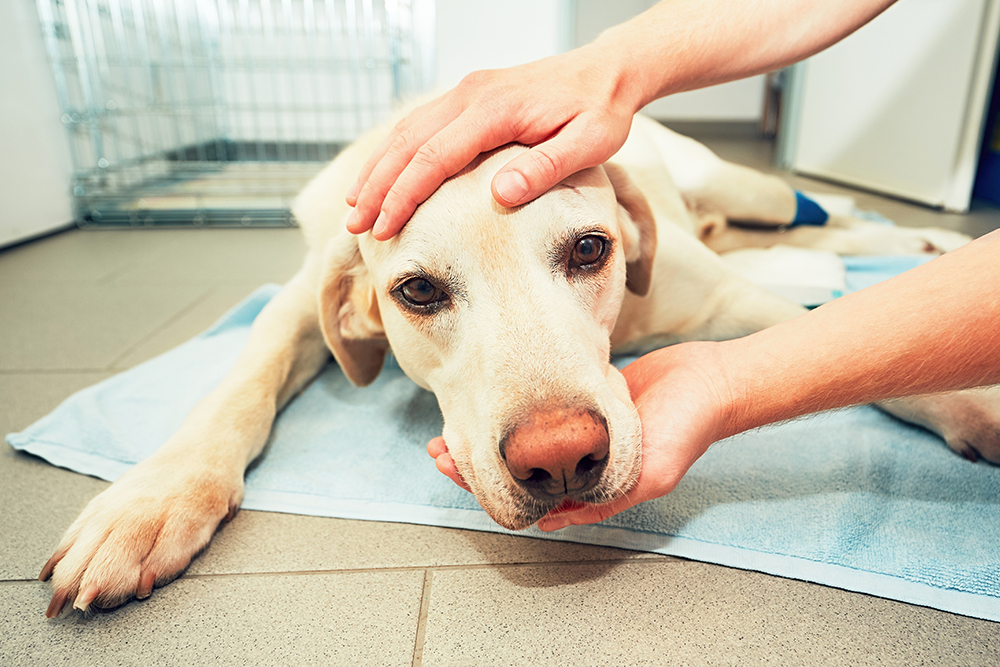Pets are experts at hiding pain. In the wild, showing weakness could make an animal vulnerable, and this instinct remains in our domestic companions. Because of this, pet owners need to be proactive in spotting subtle changes that could indicate discomfort.
At Central Kentucky Veterinary Center in Georgetown, KY, we prioritize your pet’s comfort and well-being. Understanding the common signs of pain can help you take action early, preventing suffering and improving quality of life.
Why Recognizing Pain in Pets Is Critical
Unlike humans, pets can’t tell us when something hurts. Instead, they may adjust their behavior to cope, often making it difficult to detect issues until they become severe.
There are two primary types of pain in pets:
- Acute Pain: Sudden onset, often due to injury, surgery, or infections.
- Chronic Pain: Long-term discomfort, commonly caused by arthritis, dental disease, or cancer.
Ignoring signs of pain can lead to further health complications, behavioral changes, and unnecessary suffering. Routine veterinary checkups are essential for early detection and pain management.
Learn more about painful conditions in pets: The Why and the “Ow” – AAHA
Common Signs of Pain in Dogs and Cats
Since pets instinctively mask discomfort, owners need to look for subtle signs of distress. These can vary depending on the underlying cause of pain.
1. Physical Changes
- Limping or Stiffness – Difficulty moving, favoring one leg, or hesitating to jump.
- Hunched Posture or Tucked Tail – Indicates back pain or abdominal discomfort.
- Excessive Panting or Heavy Breathing – Especially when at rest, this can signal pain.
- Trembling or Shaking – Often seen in dogs with joint pain or anxiety-induced pain.
- Overgrooming or Hair Loss – Licking one area excessively can indicate localized pain.
2. Behavioral Changes
- Decreased Activity – Less interest in play, reluctance to exercise, or hesitating to climb stairs.
- Hiding or Seeking Isolation – More common in cats; they may avoid interaction.
- Aggression or Irritability – Growling, hissing, or snapping when touched.
- Restlessness or Difficulty Settling – Pets may pace or frequently change positions to get comfortable.
3. Appetite and Drinking Habits
- Loss of Appetite – Painful conditions like dental disease or nausea can make eating difficult.
- Increased or Decreased Water Intake – Can indicate kidney disease, infections, or other underlying conditions.
4. Vocalization & Communication
- Whimpering, Yowling, or Groaning – More frequent vocalization can be a sign of pain.
- Purring in Cats – While purring is usually a sign of contentment, some cats purr when in pain as a form of self-soothing.
More on common pet pain signs: What’s Wrong? Common Pet Pain Signs – AAHA
Common Causes of Pain in Pets
Pain in pets can result from a wide range of medical conditions. Recognizing the root cause is essential for proper treatment. Some of the most common include:
1. Arthritis and Joint Pain
- Most common in senior pets, arthritis causes inflammation in the joints, leading to stiffness, limping, and reduced mobility.
- Weight management, joint supplements, and anti-inflammatory medications help improve comfort.
2. Dental Disease
- Tooth infections, broken teeth, and gum disease can cause severe pain.
- Bad breath, difficulty eating, and excessive drooling are key indicators.
- Regular dental cleanings prevent these issues.
3. Ear Infections
- Common in floppy-eared breeds, ear infections cause pain, head shaking, and scratching.
- Chronic infections can lead to hearing loss or balance issues if untreated.
4. Contagious & Viral Diseases
- Viral papillomas (oral warts), Giardia, pink eye, and kennel cough can cause pain and discomfort.
- Preventative care, such as vaccinations and parasite prevention, reduces the risk of these illnesses.
5. Foreign Body Ingestion
- Pets often swallow things they shouldn’t—bones, toys, fabric—which can cause blockages or tears in the intestines.
- Symptoms include vomiting, abdominal swelling, and lack of appetite.
Veterinary Diagnosis & Treatment of Pain in Pets
At Central Kentucky Veterinary Center, we use advanced diagnostics to determine the cause of your pet’s pain.
Diagnostic Tools
- Physical Exams – A thorough assessment of mobility, posture, and pain response.
- X-rays & Ultrasound – Imaging helps detect fractures, arthritis, or tumors.
- Bloodwork & Urinalysis – Essential for diagnosing infections, kidney disease, and more.
Treatment Options
- Medications – NSAIDs, pain relievers, and antibiotics as needed.
- Physical Therapy & Laser Therapy – Helps manage chronic pain.
- Surgery – Needed for fractures, cancer, and other conditions.
- Nutritional Support – Proper diet and weight management reduce pain in arthritic pets.
How to Help Your Pet at Home
While veterinary care is essential, there are ways to improve your pet’s comfort at home:
- Provide Soft Bedding – Orthopedic beds help with joint pain.
- Use Ramps or Stairs – Make it easier for pets to access couches or cars.
- Offer Gentle Exercise – Keep joints moving without excessive strain.
- Stick to a Routine – Consistency helps reduce anxiety and stress-related pain.

When to Seek Emergency Veterinary Care
Seek immediate veterinary attention if your pet displays:
- Sudden, severe pain or yelping
- Collapsed or unable to stand
- Excessive vomiting or diarrhea
- Difficulty breathing
- Uncontrolled bleeding
Delaying treatment can make pain worse and reduce the chances of successful recovery.
Prioritizing Your Pet’s Comfort & Well-Being
Pain management is key to your pet’s long-term health and happiness. The earlier signs are detected, the sooner treatment can begin, preventing unnecessary suffering.
At Central Kentucky Veterinary Center, we provide personalized pain management plans tailored to your pet’s needs. Don’t wait until the signs are severe—schedule a checkup today.
Book an appointment to ensure your pet is pain-free: Schedule Here







Leave A Comment